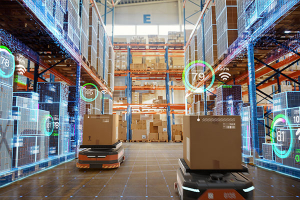How Technology is Reshaping the Modern Supply Chain
This paper explores the influence of rapidly evolving technologies that have recently come a long way and will continue to transform the supply chain in the years to come.
Brief: How Technology is Reshaping the Modern Supply Chain
It’s no secret that tech innovations have become key to the evolution of business processes.
Whether born of necessity, to fill a niche need, or developed as a blue-sky invention that business adopts, new technologies power much of the growth and development we see in supply chain operations.
But early adoption of new technologies, until very recently, was the preserve of the large, well-capitalized corporation.
Tech investments used to be major projects, time-consuming and expensive, requiring the assets and human resources capabilities of big players that needed to leverage big investments in order to compete.
Think about the early adoption of mobile scanners by the large last-mile couriers - in 1985 FedEx developed tracking and equipped its drivers with handheld scanners, enabling real-time package tracking.
P&G introduced continuous replenishment in 1987, thanks to mainframe software from IBM.
ERP software was introduced in the 1990s, as the preserve of big enterprise, motivated by the recognition that the data in various parts of a business could be linked together to help deliver better bottom-line results, but also out of fear of the Y2K crisis.
However, although these all began as the preserve of the massive, many of these and other supply chain technologies have since evolved into more scalable and affordable options for businesses across the spectrum - from the truly small to the massive enterprise.
As they mature, the cost of entry has declined, making many technologies accessible to all businesses. It is said that thanks to these developments, supply chains are on the cusp of a digital revolution. But as outlined by Georgia Tech, which is a leader in supply chain education notes: “Since the 1980s, computer technology has advanced at such a phenomenal rate that it is currently far ahead of the ability of the supply and logistics field to adequately utilize the new technologies.”
So, as the pace of adoption continues to accelerate, there is still plenty of opportunity for technologies to be adapted to supply chain operations. At the moment, there are several that are quickly gaining traction.
This paper is going to explore the current influence of mobile technology, Software as a Service (SaaS), big data, and web APIs. These four have come a long way recently and continue to evolve rapidly. We’re going to take a look at where they are now and where they might be headed.
What’s Related




Favorites





